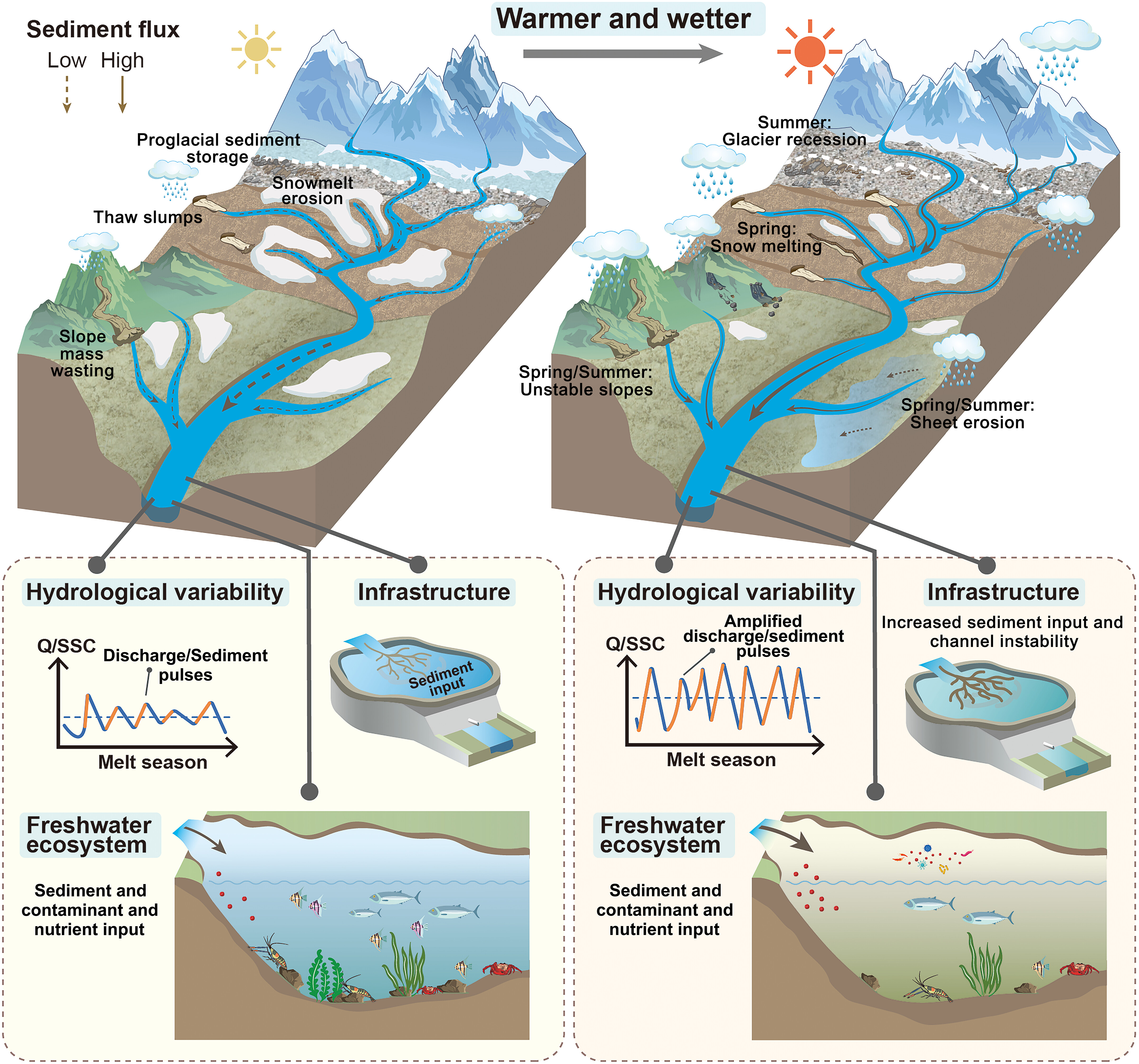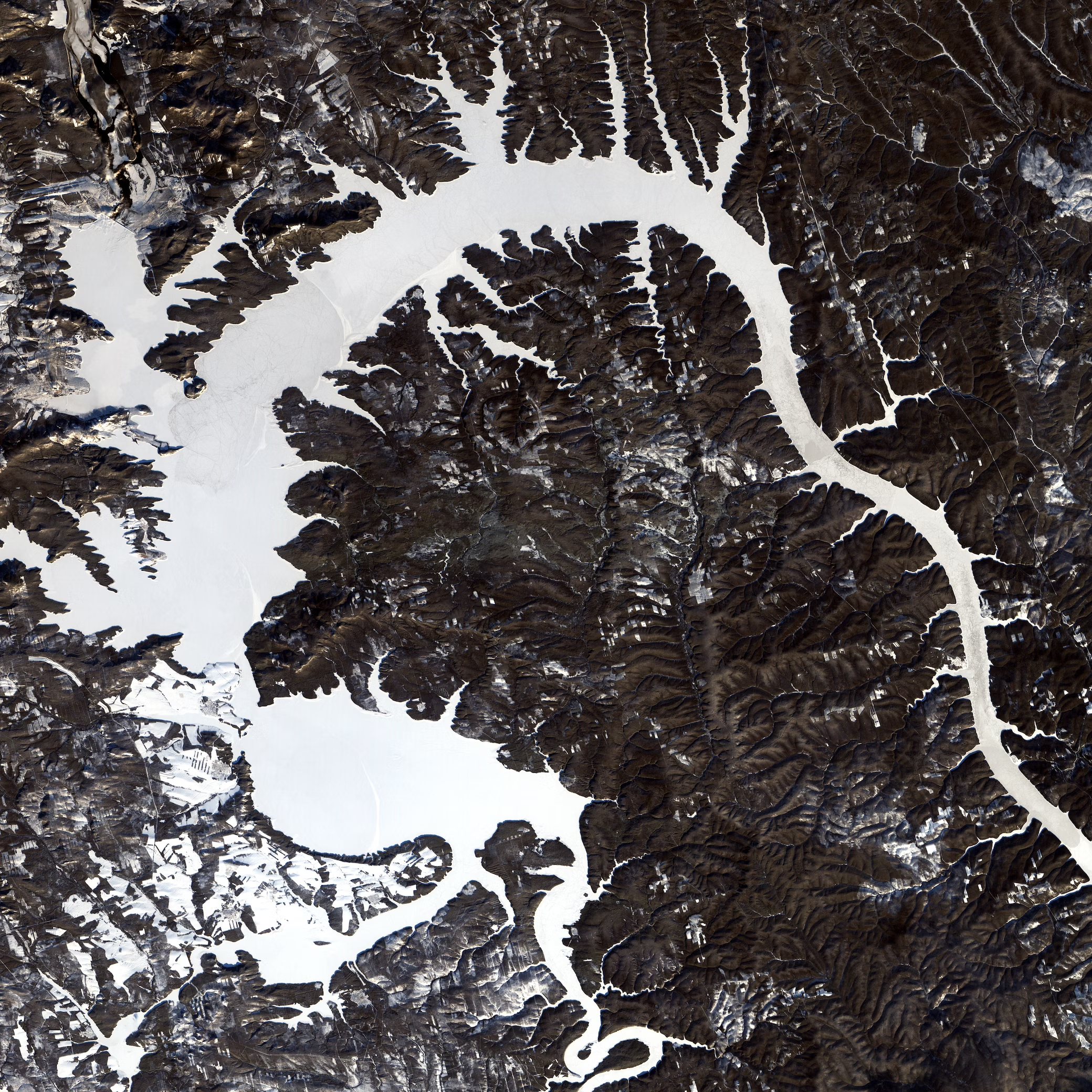Research | The hidden impacts of climate change on freshwater ecosystem
Nov 27, 2023
Peking University, November 26, 2023: From melting glaciers to rising sea levels, from raging wildfires to devastating floods, society has grown increasingly aware of the increasingly frequent climate crises. But what about its subterranean flow? Recently, the research group led by Li Dongfeng at the College of Environmental Sciences and Engineering, Peking University (PKU), published a paper pertaining to this topic in Science Advances.
The paper identifies four typical types of cryospheric rivers (glacier-fed rivers, snowmelt-fed rivers, permafrost-fed rivers, and composite rivers), revealing a new mechanism for characterizing the seasonal variation of sediment transport in cryospheric rivers. The study emphasizes the impact of seasonal variations in water-sediment transport in cryospheric rivers on channel evolution, flood hazards, reservoir operation, and ecosystem stability.
Why it matters: Climate change and cryosphere degradation have remarkably affected riverine water and sediment fluxes from polar and high-mountain regions. Seasonal sediment dynamics directly affect cyclical fluvial material supply and year-round water-food-energy provisions to downstream communities. However, the responses of seasonal dynamics and regime shifts in sediment transport remain largely understudied. Thus, disentangling the interplay between river regime shifts, climate change, and cryosphere degradation is essential to facilitate adaptation to an amplified hydrological imbalance in a warming future.

Fig. 4. Increased readily transportable sediment sources, amplified hydrological variability, and associated social-ecological impacts in a warmer and wetter climate. Hydrogeomorphic changes in response to a warming and wetting climate are illustrated in the upper panel. Changes in hydrological variability and the impacts of sediment transport on infrastructure (e.g., dams, reservoirs, and hydropower facilities) and freshwater ecosystems are illustrated in the lower panel.
Key findings:
· The study demonstrated that seasonal sediment-transport regimes shifted from the 1960s to 2000s in four cryosphere-fed rivers characterized by glacial, nival, pluvial, and mixed regimes.
· Highlighted that the increases in hydroclimatic extremes and cryosphere degradation would lead to amplified variability in fluvial fluxes and higher summer sediment peaks. This could threaten downstream river infrastructure safety and ecosystems and aggravate glacial/pluvial floods.
· Offered a monthly-scale sediment-availability-transport model that can reproduce such regime shifts. This would help facilitate sustainable reservoir operation and river management in wider cryospheric regions depending on future climate and hydrological change.
Research Methodology:
· Leveraged decadal monthly hydroclimatic observations from four distinct and pristine cryospheric basins in Tien Shan and the north Tibetan Plateau mountains to investigate regime shifts in suspended sediment transport from the 1960s to 2000s and decipher their linkage to climate change and cryosphere degradation.
· Refined a sediment-availability-transport model that operated at a monthly scale (SAT-M model) to simulate the shifted sediment-transport regime by considering the impacts of hydroclimatic variables on sediment availability. The transferable SAT-M model framework could underpin the evaluation and prediction of river regime shifts under future climate change scenarios in wider cryospheric regions.
Written by: Yu Peijia
Edited by: Shi Xinyao
Source: College of Environmental Sciences and Engineering

